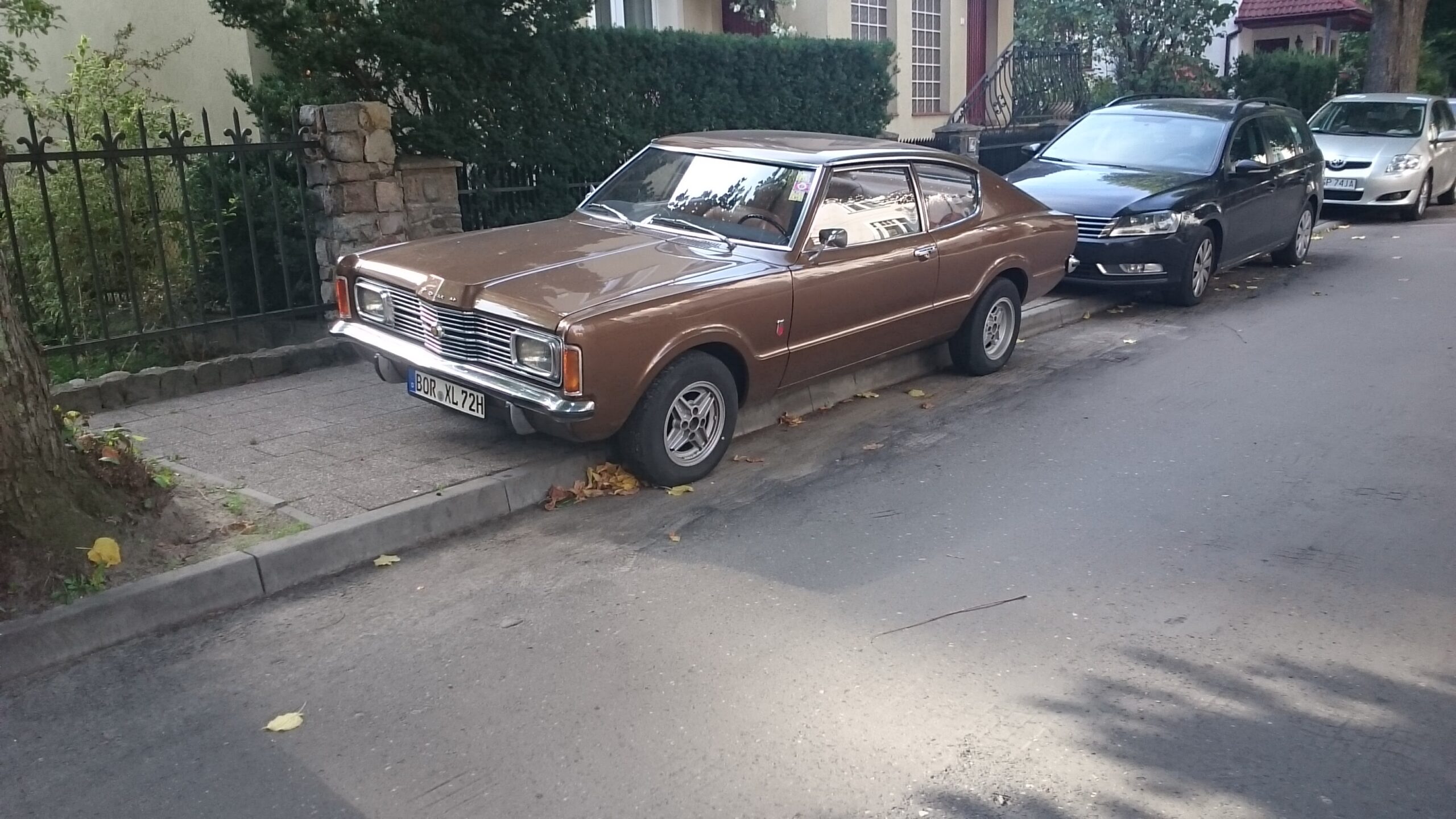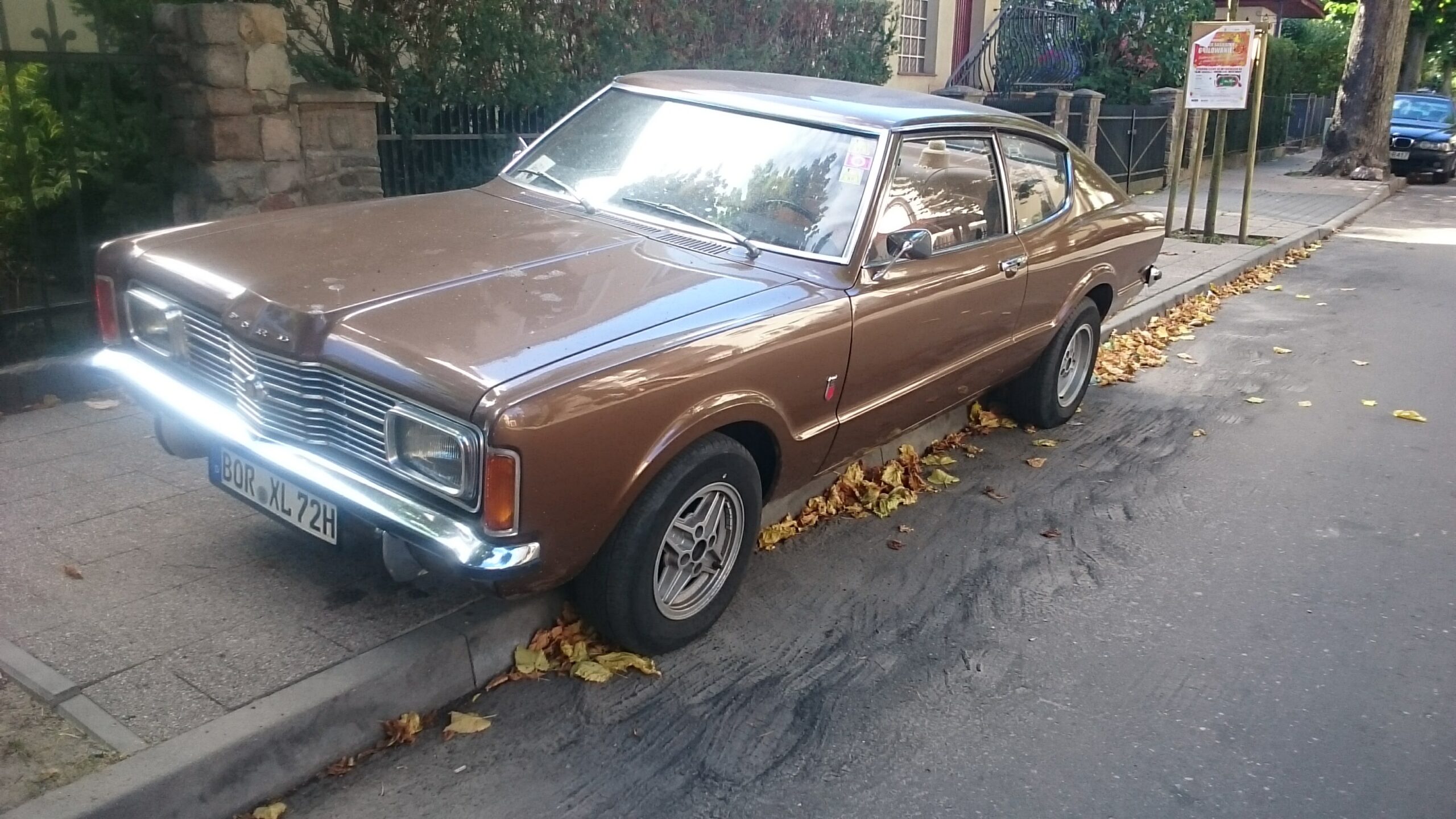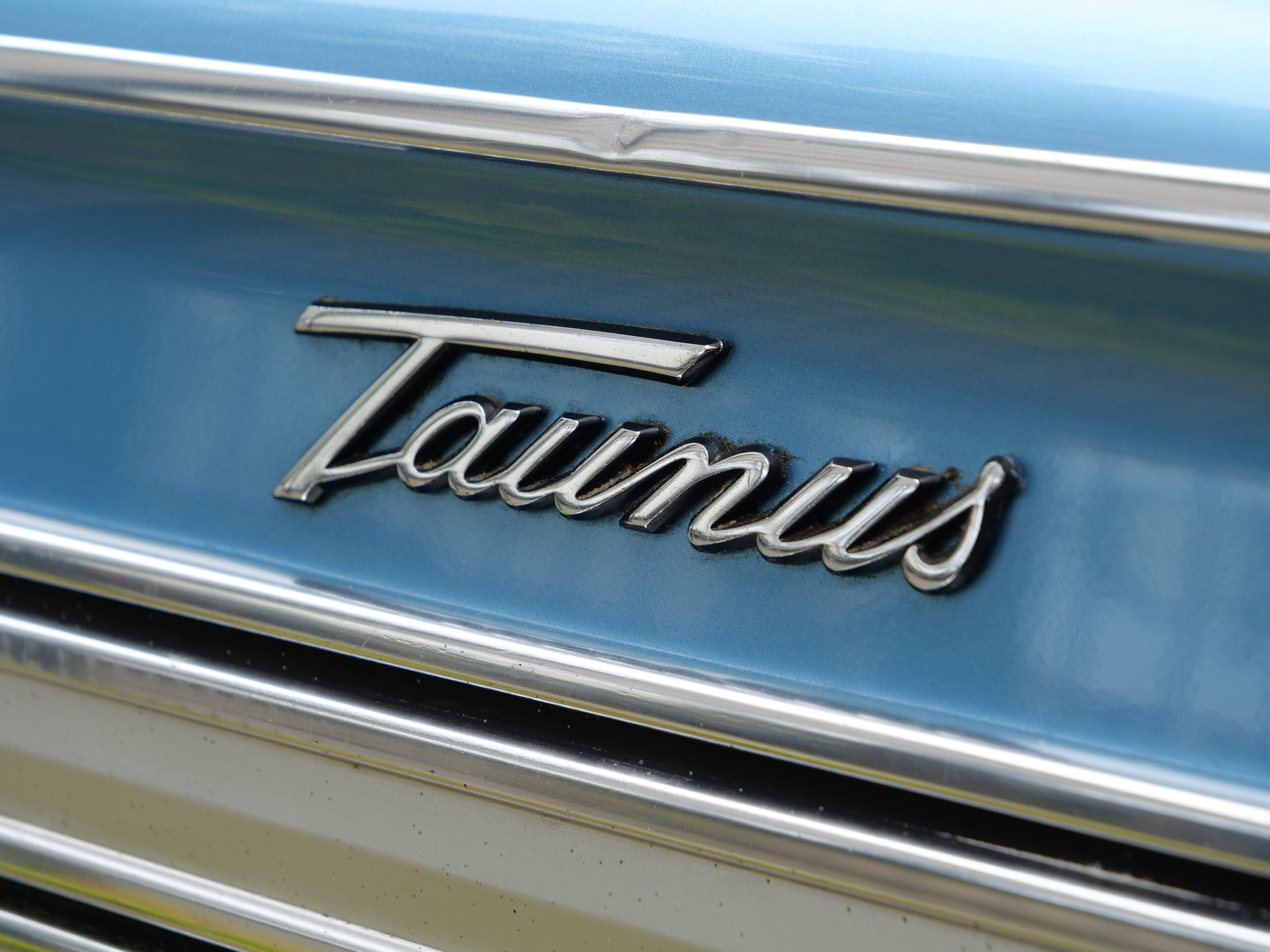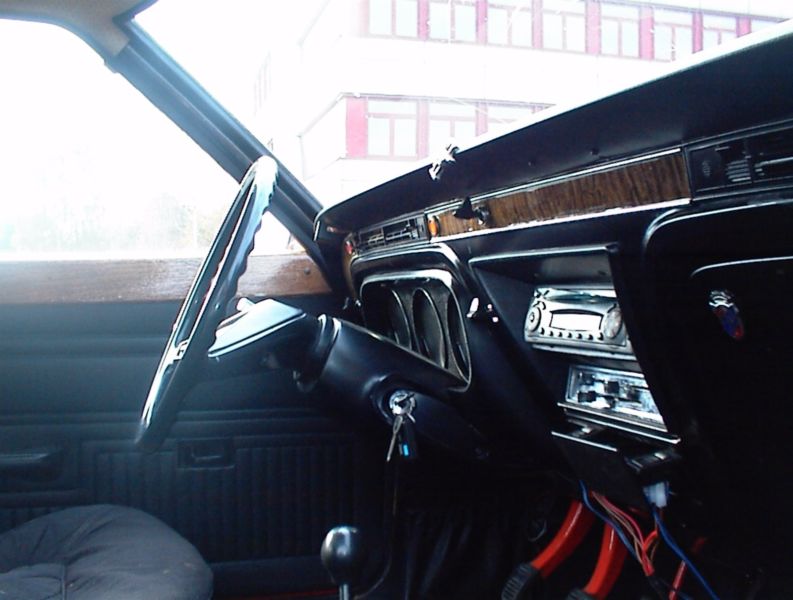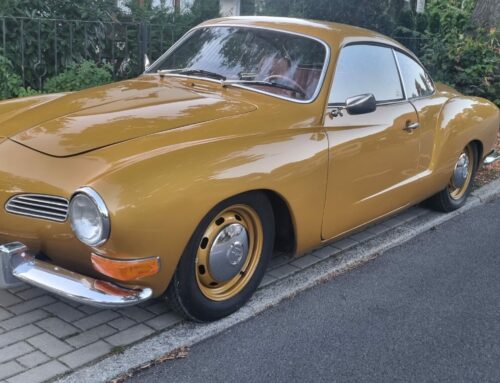Index:
History
Productionsfigures
Design
Model overview
Driving characteristics
Everyday use
Trunk
Spare Parts
Interior
Safty
Maintenance Costs
Fuel Consumptions
Motor Layout
Motor
Transmission
Breaks
Suspension
Common Issues
Driving pleasure
Market offering
Price development
Assessment
Datasheet
History
Introduction:
The Ford Taunus TC 1 holds a special place in automotive history as a true icon of its time. Introduced in 1970, this compact car from Ford Motor Company played a key role in shaping the automotive landscape of the era. With its impressive design, advanced features, and reliable performance, the Taunus TC 1 quickly became a favorite among car enthusiasts and families alike. Let’s dive into the fascinating history and development of this timeless classic.
Origins and Design:
The Ford Taunus TC 1 was developed as a successor to the popular Ford 12M/15M models. The “TC” in its name stood for “Taunus Corsair,” highlighting its connection to the Taunus lineup, which was exclusive to the European market. The TC 1 was designed under the guidance of Uwe Bahnsen, one of Ford’s renowned designers of the time.
The Taunus TC 1 featured a sleek and aerodynamic body design. Its distinctive lines and smooth curves gave it an elegant appearance that set it apart from its competitors. The car’s wide grille, pronounced headlights, and well-defined rear end added to its overall appeal. The interior was crafted with comfort in mind, featuring ergonomic seating, ample legroom, and modern dashboard controls.
Technological Innovations:
Ford incorporated several technological advancements into the Taunus TC 1, making it a truly cutting-edge vehicle. One of its notable features was the introduction of front-wheel-drive (FWD) in a Ford compact car for the first time. This allowed for better handling and improved traction on the road.
Under the hood, the Taunus TC 1 came equipped with a range of engine options, including four-cylinder petrol and diesel engines, catering to different driving preferences and needs. Additionally, the TC 1 featured front disc brakes, power-assisted steering, and independent suspension, further enhancing its performance and driving experience.
Evolution and Legacy:
Throughout its production run, the Ford Taunus TC 1 underwent several updates and facelifts, keeping it in line with ever-changing automotive trends. These updates aimed to improve the car’s safety, reliability, and overall appeal.
The TC 1’s legacy extends beyond its production years, as it paved the way for subsequent generations of Ford’s compact cars. Its influence can be seen in models like the later versions of the Ford Escort and Sierra, which borrowed design cues and engineering advancements from the TC 1.
Today, the Ford Taunus TC 1 enjoys a cult following among classic car enthusiasts and collectors. Its timeless design and engineering brilliance continue to command attention, serving as a testament to Ford’s commitment to innovation and excellence.
Conclusion:
The Ford Taunus TC 1 stands as a remarkable vehicle that transcended the automotive landscape of its time. With its stylish design, advanced features, and unwavering performance, it quickly became a symbol of automotive excellence. The TC 1’s impact on Ford’s future compact cars and its enduring reputation among car enthusiasts make it a true classic in automotive history.
Design
The Ford Taunus TC 1, also known as the Ford Cortina Mk IV, was designed by Roy Haynes. Haynes was an influential automotive designer who worked for Ford in the 1960s and 1970s.
The inspiration for the Ford Taunus TC 1 came from various sources. The design team aimed to create a modern and sophisticated sedan that could compete with other mid-size family cars of the time. They wanted a car that would appeal to a wide range of customers with its design, performance, and practicality.
In terms of design language, the Ford Taunus TC 1 followed the contemporary trends of the 1970s. It had a sleek and aerodynamic profile with smooth lines, rounded corners, and an overall clean appearance. The front grille was wide and rectangular, complemented by rectangular headlights on either side. The rear of the car featured longer, horizontal taillights that extended towards the sides.
The interior design of the Taunus TC 1 was focused on driver comfort and functionality. It featured a spacious cabin with ample legroom and a well-designed dashboard layout. The controls and instruments were intuitively placed for easy access and usability.
Overall, the Ford Taunus TC 1’s design language was a reflection of the era’s modern aesthetics, incorporating practicality, comfort, and style to meet the needs and desires of mid-size sedan buyers.
Model overview
The Ford Taunus TC 1, also known as the Ford Cortina, was a popular car that was produced by Ford between 1970 and 1976. During its production run, there were several variations available for the Taunus TC 1, catering to different tastes and needs of car buyers. Here are some of the notable variations:
1. Body Styles: The Taunus TC 1 was offered in different body styles, including a four-door sedan, two-door coupe, and a five-door station wagon. These options allowed customers to choose the one that suited their preferences and requirements.
2. Trim Levels: The Taunus TC 1 came in various trim levels, offering different levels of features and luxury. Some of the trim levels included Base, L, XL, GT, and GXL. The higher-end trims offered additional amenities such as improved interior materials, sportier styling cues, and more advanced technology.
3. Engine Options: The Taunus TC 1 had different engine options to suit different performance preferences and fuel efficiency requirements. These included four-cylinder engines with varying power outputs, ranging from 1.3 liters to 2.0 liters. The more powerful engines were often offered on the higher-end GT and GXL trims.
4. Transmission Options: Customers had the choice between manual and automatic transmissions for the Taunus TC 1. The manual transmissions offered various gear options, allowing drivers to have better control over the car’s performance, while the automatic transmissions provided a more convenient and effortless driving experience.
5. Special Editions: Throughout its production, Ford released special editions of the Taunus TC 1 to commemorate certain events or to offer unique styling cues. Examples of these special editions include the Taunus GT XLR, which featured a distinctive blacked-out grille and sporty stripes, and the Taunus GXL Exec, which added more luxurious features to the GXL trim level.
It is important to note that the availability of these variations may vary depending on the country or market where the Ford Taunus TC 1 was sold.
Everyday use
The Ford Taunus TC 1 is a practical car for everyday use, offering a balance between comfort, functionality, and reliability. Here are a few key aspects to consider:
1. Size and Space: The Taunus TC 1 has a reasonable size, making it easy to maneuver in urban areas and park in tight spaces. It has ample cabin space that can comfortably accommodate five passengers, and a decent-sized trunk for storing groceries or luggage.
2. Fuel Efficiency: This model offers a range of engine options, including both petrol and diesel variants. While older models may not be as fuel-efficient as newer cars, they still offer reasonable mileage, making them suitable for daily commuting or long drives.
3. Maintenance and Reliability: The Ford Taunus TC 1 is known for its durability and robust build quality. Generally, Ford vehicles are known for their reliability, and with proper maintenance, this model can serve you well for many years.
4. Comfort and Features: While the Taunus TC 1 may lack some of the modern features found in newer cars, it still offers a comfortable driving experience. Depending on the trim level, you can find options like air conditioning, power steering, and electric windows, enhancing the overall convenience.
5. Affordability: The Taunus TC 1 is considered a budget-friendly vehicle, especially if you are looking for a reliable used car. The initial cost is relatively low, and maintenance and repair costs are generally affordable.
Despite being a practical choice, it’s worth noting that the Taunus TC 1 is an older model, so it may lack some modern safety features like ABS or airbags. If safety is a top priority, it might be wise to consider newer car models with more advanced safety technologies.
Trunk
The Ford Taunus TC 1, also known as the Ford Cortina Mark III, was produced from 1970 to 1976. It featured a spacious trunk with a capacity of approximately 15 cubic feet (425 liters). This provided ample storage space for luggage and other items, making it suitable for both daily commuting and long trips.
Interior
The Ford Taunus TC 1, produced between 1970 and 1976, had an interior that was considered to be of decent quality for its time. The materials used in the interior were a combination of vinyl, cloth, and plastic. The seats were typically upholstered in vinyl, while the dashboard and door panels were made of hard plastic. The quality of the materials varied depending on the trim level and options chosen by the buyer. Overall, the interior of the Ford Taunus TC 1 was functional and durable, but not particularly luxurious.
Safty
The Ford Taunus TC 1, produced between 1970 and 1975, was a popular family car known for its robustness and reliability. However, it was manufactured during a time when safety standards were not as advanced as they are today. As a result, the safety features in the Ford Taunus TC 1 were quite basic compared to modern standards.
Some of the safety features found in the Ford Taunus TC 1 included seat belts for both the front and rear passengers, a collapsible steering column, and a reinforced passenger compartment designed to absorb impact. However, it did not have features like airbags, traction control, or electronic stability control that are standard in modern vehicles.
As for safety ratings, it is important to note that the crash testing and safety rating systems commonly used today were not established during the production period of the Ford Taunus TC 1. Therefore, the vehicle does not have official safety ratings like those provided by organizations such as Euro NCAP or the National Highway Traffic Safety Administration (NHTSA).
It is crucial to consider that vintage cars, including the Ford Taunus TC 1, may not meet current safety standards. If you are looking for a car with advanced safety features and high safety ratings, considering a more modern vehicle would be advisable.
Maintenance Costs
The Ford Taunus TC 1 is a classic car, which means that the costs for maintenance, insurance, and general upkeep can vary depending on factors such as the car’s condition, availability of spare parts, and local regulations. However, I can provide some general information that might give you an idea of the costs involved.
Maintenance:
The maintenance costs for a Ford Taunus TC 1 can be relatively affordable, as it is a relatively simple and easy-to-maintain classic car. Regular maintenance tasks such as oil changes, brake checks, and tune-ups can be performed at home or by a local mechanic. However, as the car ages, you may encounter some issues that could require more extensive repairs, which can be more costly. It is advisable to set aside a budget for potential unexpected repairs.
Insurance:
The cost of insurance for a Ford Taunus TC 1 can also vary depending on several factors, including your location, driving history, age, and coverage preferences. Classic car insurance is generally more affordable compared to regular car insurance as these cars are often driven less frequently and are considered to be less at risk for accidents. However, it is still important to shop around and compare quotes from different insurance companies to find the best coverage and price for your specific situation.
General Upkeep:
Apart from maintenance and insurance costs, there are other general upkeep expenses you should consider. These may include regular cleaning, waxing, and detailing to keep the car in good condition, as well as occasional purchases of new tires and other consumables. Additionally, you may want to join a car club or attend car shows, which could involve annual membership fees or entry fees for events.
In conclusion, while the costs for maintaining, insuring, and keeping a Ford Taunus TC 1 can be relatively affordable compared to modern cars, it is essential to budget for regular maintenance, potential repairs, insurance premiums, and general upkeep expenses to ensure the car remains in good condition and retains its value.
Fuel Consumptions
The fuel consumption for the Ford Taunus TC 1 can vary depending on various factors such as driving conditions, maintenance, and individual driving habits. However, on average, the Ford Taunus TC 1 is known to have a fuel consumption of around 8-12 liters per 100 kilometers. It is important to note that these figures are approximate and can vary from person to person.
Motor Layout
The Ford Taunus TC 1, also known as the Ford Cortina, was a popular family car produced by Ford from 1970 to 1976. The engine and transmission layout in this model varied depending on the specific variant and trim level.
The base models of the Ford Taunus TC 1 were usually equipped with a four-cylinder engine. In the earlier years, it was common to find a 1.3-liter or 1.6-liter engine. Later on, Ford introduced a more powerful 2.0-liter engine option for higher trim levels. These engines were generally positioned at the front of the vehicle.
As for the transmission, the Ford Taunus TC 1 featured both manual and automatic options. The manual transmission was typically a four-speed unit, with a column or floor-mounted shifter depending on the specific model. Meanwhile, the automatic transmission was a three-speed unit.
Overall, the engine and transmission layout in the Ford Taunus TC 1 provided a balance between performance and efficiency, making it a practical choice for families during its time.
Motor
The Ford Taunus TC 1, also known as the Ford Cortina TC, was produced from 1970 to 1976 and was available with a range of engine options. Here are the engines that were used in the Ford Taunus TC 1:
1.3L inline-4 engine: This engine had a displacement of 1,298 cc and produced around 55 horsepower. It was the base engine option for the Taunus TC 1.
1.6L inline-4 engine: This engine had a displacement of 1,593 cc and produced around 73 horsepower. It was a more powerful option available for those seeking improved performance.
2.0L V4 engine: This engine had a displacement of 1,996 cc and produced around 90 horsepower. It offered even more power compared to the smaller engines and was a popular choice for those looking for a sportier driving experience.
2.3L V6 engine: Towards the end of the Taunus TC 1’s production, Ford introduced a 2.3L V6 engine. This engine had a displacement of 2,294 cc and produced around 108 horsepower. It provided a significant power boost and enhanced performance capabilities.
It’s important to note that engine availability may have varied across different markets and model years, so the engines mentioned above are the typical options found in the Ford Taunus TC 1, but there may have been other engine choices depending on the specific region or production year.
Transmission
The Ford Taunus TC 1, also known as the Ford Cortina TC, was produced by Ford from 1970 to 1976. It was available with several transmission options depending on the specific model and trim level.
The manual transmission options for the Ford Taunus TC 1 included a 4-speed manual gearbox as standard, with a floor-mounted shifter. Additionally, there was a 5-speed manual transmission known as the “Super Gearbox” that was available as an optional upgrade on certain models.
For those who preferred automatic transmission, a 3-speed automatic gearbox was also offered as an option on the Ford Taunus TC 1.
Overall, the Ford Taunus TC 1 provided a range of transmission choices to cater to different driver preferences and needs.
Breaks
The Ford Taunus TC 1, also known as the Ford Cortina Mk IV, was produced from 1976 to 1982. The braking system used in this model varied depending on the specific variant and market. Here are the brake options that were available for the Ford Taunus TC 1:
1. Front Discs and Rear Drums: The standard braking setup in most Taunus TC 1 models consisted of front disc brakes and rear drum brakes. This configuration provided adequate stopping power for everyday driving.
2. Front Discs and Rear Discs: In certain high-performance variants or optional packages, the Taunus TC 1 was equipped with front disc brakes and rear disc brakes. This setup improved overall braking performance and offered better heat dissipation during hard braking.
It’s worth noting that different countries and markets might have had specific specifications or variations on the braking systems available for the Ford Taunus TC 1. Additionally, the braking system might have been updated or revised throughout the production years.
Suspension
The Ford Taunus TC 1, also known as the Ford Cortina Mk3, was a popular vehicle produced by Ford from 1970 to 1976. It featured various suspension setups depending on the model and trim level.
The standard suspension on the Taunus TC 1 consisted of independent front suspension with MacPherson struts fitted with coil springs and lower transverse arms. At the rear, it had a live axle setup with semi-elliptic leaf springs. This setup provided a good balance between ride comfort and handling.
However, there were also optional suspension packages available for the Taunus TC 1. One of the most notable was the “Ghia” suspension, which was offered on the higher trim levels. The Ghia suspension added features such as front and rear anti-roll bars, gas-filled shock absorbers, and revised spring rates. This package aimed to enhance the car’s handling characteristics and offer a sportier driving experience.
It’s worth noting that the specific suspension setups may have varied between different markets and individual models. Therefore, it’s always advisable to consult the owner’s manual or contact a Ford expert for detailed and accurate information regarding suspension specifications for a particular Taunus TC 1 model.
Common Issues
The Ford Taunus TC 1, also known as the Ford Cortina in some markets, was a popular mid-sized car produced by Ford Europe between 1970 and 1976. While it was a reliable and successful model, there were a few weaknesses or common issues that owners and potential buyers should be aware of.
1. Rust: One of the biggest problems with the Ford Taunus TC 1 was its susceptibility to rust. The bodywork, especially around the wheel arches, sills, and door bottoms, had a tendency to corrode, particularly in regions where road salt was used during winter. Regular inspections and rust prevention treatments were necessary to prolong the life of the car.
2. Mechanical Issues: The Taunus TC 1 had its fair share of mechanical issues, particularly with the earlier models. The suspension system, especially the front MacPherson struts, had weak points and required frequent maintenance. The rear leaf springs were also known to sag over time, resulting in a lower ride height and compromised handling. Additionally, the engine’s cooling system had a tendency to overheat if not properly maintained.
3. Electrical Problems: Electrical issues were common in the Taunus TC 1. These ranged from faulty wiring connections to unreliable switches and controls. Problems with the electrical system could lead to various malfunctions, such as non-functioning lights, intermittent wipers, or dysfunctional gauges on the dashboard. It was important for owners to regularly check the electrical components and address any issues promptly.
4. Interior Quality: The interior of the Taunus TC 1 was not the most robust, with materials prone to wear and tear over time. Seat covers, carpets, and dashboard trims were known to fade and become brittle with age, especially in models that were exposed to prolonged sunlight or extreme temperatures. The plastic components, such as vents and knobs, were also delicate and prone to breakage.
5. Fuel Efficiency: Compared to some of its competitors, the Taunus TC 1 was not renowned for its fuel efficiency. The larger engines in particular, such as the V6 variants, consumed more fuel than expected for a mid-sized car. This could be a significant drawback for those looking for a more economical option.
Despite these weaknesses, it’s worth noting that the Ford Taunus TC 1 had a solid reputation for reliability and durability. Many of its flaws could be mitigated through regular maintenance, proper care, and addressing issues as they arose. Ultimately, it was a popular car in its time and is still cherished by enthusiasts today.
Market offering
The Ford Taunus TC 1 is a classic car that was produced by Ford from 1970 to 1975. As it is a vintage vehicle, it is primarily available in the used car market and the prices can vary depending on the condition, mileage, and location.
Since the Ford Taunus TC 1 is an older model, it may be challenging to find accurate and up-to-date price trends in euros (€). I recommend checking online car marketplaces, classic car auctions, or reaching out to vintage car dealerships specializing in Ford models to get a better idea of the current market offering and price trends specifically in euros for the Ford Taunus TC 1.
FAQ
FAQ – Ford Taunus TC 1
Q1: What is the Ford Taunus TC 1?
A1: The Ford Taunus TC 1 is a classic car model produced by Ford Germany between 1970 and 1982. It was a popular mid-size car during its time and is known for its distinctive design and performance.
Q2: What are the engine options available for the Ford Taunus TC 1?
A2: The Ford Taunus TC 1 was available with a range of engine options, including petrol and diesel variants. The petrol engines ranged from 1.3 to 2.3 liters, offering different power outputs. The diesel engine options were also available, including a 2.0-liter engine.
Q3: What is the performance like for the Ford Taunus TC 1?
A3: The performance of the Ford Taunus TC 1 varies depending on the engine chosen. The more powerful engine options provide decent acceleration and a comfortable cruising experience. However, it is worth noting that the car was designed more for comfort and practicality rather than high-speed performance.
Q4: Is the Ford Taunus TC 1 fuel-efficient?
A4: Compared to modern cars, the fuel efficiency of the Ford Taunus TC 1 may not be as impressive. However, considering its time of production, the car offers decent fuel efficiency for its class.
Q5: What are the key features and technologies available in the Ford Taunus TC 1?
A5: The Ford Taunus TC 1 was equipped with various features and technologies for its time, including power steering, power brakes, automatic transmission options, air conditioning, and radio. However, it is essential to note that the features may vary depending on the model and trim level.
Q6: How is the interior space and comfort in the Ford Taunus TC 1?
A6: The Ford Taunus TC 1 provides ample interior space for its passengers. It offers comfortable seating and a decent amount of legroom and headroom. The materials used in the interior may vary depending on the trim level, but overall, it offers a satisfactory level of comfort.
Q7: Is the Ford Taunus TC 1 a reliable car?
A7: The Ford Taunus TC 1 has gained a reputation for being a reliable car during its production years. With proper maintenance and care, it can provide a dependable driving experience. However, being a classic car, it may require more attention and regular servicing to ensure its longevity.
Q8: Can I still find spare parts for the Ford Taunus TC 1?
A8: While finding original spare parts for the Ford Taunus TC 1 may be a challenge, there are still aftermarket options available. Many specialized car part suppliers cater to classic cars like the Ford Taunus TC 1, ensuring you can find the necessary components for maintenance and repairs.
Q9: How much does the Ford Taunus TC 1 cost?
A9: The cost of a Ford Taunus TC 1 can vary significantly based on its condition, mileage, and rarity. Typically, well-maintained and restored models command higher prices, while those in need of restoration or with higher mileage can be more affordable. It is recommended to research local listings and consult with classic car experts to determine the market value.
Q10: Is the Ford Taunus TC 1 a good collector’s car?
A10: The Ford Taunus TC 1 is considered a classic car, and it can be a good option for collectors interested in vintage and historical automobiles. Its unique design, historical significance, and limited availability make it an appealing choice for those passionate about classic cars. However, it is important to consider factors such as availability of spare parts and maintenance costs before making a purchase decision.
Datasheet
Ford Taunus TC 1 Datasheet
The Ford Taunus TC 1 was a family car produced by the American automaker Ford in its German division between 1970 and 1975. It was available in various body styles and engine configurations, offering a range of options to suit different customer preferences.
Model Variants:
1. Ford Taunus TC 1 Sedan: This variant featured a conventional four-door sedan body style, providing ample space for passengers and luggage.
2. Ford Taunus TC 1 Coupe: The coupe variant offered a sportier and more stylish design, featuring two doors and a sleeker silhouette.
3. Ford Taunus TC 1 Estate: The estate variant, also known as the station wagon, provided additional cargo space and versatility for those needing extra carrying capacity.
Engine Specifications:
1. 1.3L Inline-4 OHV (Overhead Valve) Engine:
– Power Output: 55 horsepower
– Torque: 83 Nm
– Fuel Type: Petrol (Gasoline)
– Transmission: 4-speed manual or 3-speed automatic
2. 1.6L Inline-4 OHV Engine:
– Power Output: 65 horsepower
– Torque: 106 Nm
– Fuel Type: Petrol (Gasoline)
– Transmission: 4-speed manual or 3-speed automatic
3. 1.6L Inline-4 OHV Crossflow Engine:
– Power Output: 72 horsepower
– Torque: 112 Nm
– Fuel Type: Petrol (Gasoline)
– Transmission: 4-speed manual or 3-speed automatic
4. 2.0L V4 Engine:
– Power Output: 85 horsepower
– Torque: 137 Nm
– Fuel Type: Petrol (Gasoline)
– Transmission: 4-speed manual or 3-speed automatic
5. 2.0L V6 Engine:
– Power Output: 108 horsepower
– Torque: 171 Nm
– Fuel Type: Petrol (Gasoline)
– Transmission: 4-speed manual or 3-speed automatic
Note: The availability of specific engines might vary depending on the market and model year.
Additional Features:
The Ford Taunus TC 1 offered a range of features to enhance the driving experience and comfort, including:
– Front disc brakes for improved stopping power
– Power steering for effortless maneuvering
– Comfortable seating with optional upholstery materials
– Heating and ventilation system for climate control
– Safety features such as collapsible steering column and seat belts
– Stylish exterior design with chrome accents and body-colored bumpers
– Optional extras like electric windows, central locking, and alloy wheels
Overall, the Ford Taunus TC 1 was a reliable and practical family car with a variety of engine choices to suit different driving preferences. Its versatility and range of model variants made it an appealing option for individuals and families alike.








